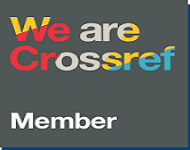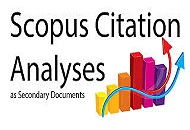Inclusive Teaching Strategies and Student-Perceived Outcomes in Primary Inclusive Schools: Insights from Jabodetabek, Indonesia
DOI:
https://doi.org/10.33394/jp.v12i4.16774Keywords:
inclusive education, inclusive outcomes, student perception, teaching strategies., Elementary educationAbstract
This study aims to investigate the correlation between inclusive teaching strategies and their impact on the outcomes of inclusive education. Using a descriptive quantitative design, this study involved inclusive elementary school students (n = 339) in the Jakarta, Bogor, Depok, Tangerang, and Bekasi areas. Data were collected through the Perception of Inclusion questionnaire (n = 12) and Inclusive Teaching Strategies Scale (n = 29). Hierarchical regression tests were used to examine the relationship between variables and dimensions of teacher teaching strategies that most influenced inclusive outcomes. The results showed that Values & Attitudes accounted for 37% of the variance in inclusion outcomes (R² = 0.37; β = 0.60, p < 0.01). Adding Management & Environment increased the explained variance to R² = 0.41 (β = 0.26, p < 0.01), and adding Teaching & Instruction further raised it to R² = 0.43 (β = 0.18, p < 0.01). In the final model, all subscales remained significant (Values & Attitudes β = 0.35; Management & Environment β = 0.20; Teaching & Instruction β = 0.18; all p < 0.01), identifying teacher Values & Attitudes as the strongest predictor. Findings underscore the need to prioritize teacher mindset development, proactive classroom management routines, and differentiated instruction to strengthen inclusive outcomes. Stakeholders should implement programs that raise awareness and promote diversity among students to foster more positive attitudes and values toward inclusion.
References
Alnahdi, G. H., Lindner, K. T., & Schwab, S. (2022). Teachers’ implementation of inclusive teaching practices as a potential predictor for students’ perception of academic, social and emotional inclusion. Frontiers in Psychology, 13(July). https://doi.org/10.3389/fpsyg.2022.917676
Ananda, F., Yuliasesti, E., & Sari, D. (2023). Jurnal Psikologi Terapan dan Pendidikan Workforce Agility : Kajian literatur. 5(2), 120–133.
Darma, I. P. and Rusyidi, B. (2015). Pelaksanaan Sekolah Inklusi Di Indonesia. Prosiding Penelitian Dan Pengabdian Kepada Masyarakat, 2(2), 223–227. doi:10.24198/jppm.v2i2.13530
Dwi Arnia Ulfa, O. F., & Wardany. (2022). Kesiapan guru dalam penyelenggaran kelas inklusi di MI NW Lendang Penyonggok, Lombok. Jurnal Pendidikan Khusus (JPK), 18(2), 113–123. https://journal.uny.ac.id/index.php/jpk/article/view/48322
Furrer, V., Valkanover, S., Eckhart, M., & Nagel, S. (2020). The Role of Teaching Strategies in Social Acceptance and Interactions: Considering Students with Intellectual Disabilities in Inclusive Physical Education Frontiers in Education, 5(October), 1–19. https://doi.org/10.3389/feduc.2020.586960
Garrote, A., Felder, F., Krähenmann, H., Schnepel, S., Sermier Dessemontet, R. and Moser Opitz, E. (2020). Social Acceptance in Inclusive Classrooms: The Role of Teacher Attitudes Toward Inclusion and Classroom Management Frontiers in Education, 5, 1–11. https://doi.org/10.3389/feduc.2020.582873
Grüter, S., Goldan, J., & Zurbriggen, C. L. A. (2023). Examining early learners’ perceptions of inclusion: adaptation of the student version of the perceptions of inclusion questionnaire for first- and second-grade students (PIQ-EARLY). Frontiers in Psychology, 14, 1–12. https://doi.org/10.3389/fpsyg.2023.1181546
Heyder, A., Südkamp, A., & Steinmayr, R. (2020). How are teachers’ attitudes toward inclusion related to the social-emotional school experiences of students with and without special educational needs? Learning and Individual Differences, 77, 101776 (2018). https://doi.org/10.1016/j.lindif.2019.101776
Kefallinou, A., Symeonidou, S., & Meijer, C. J. W. (2020). Understanding the value of inclusive education and its implementation: A review of the literature Prospects, 49(3–4), 135–152. doi:10.1007/s11125-020-09500-2
Kleeberg-Niepage, A., Brehme, D., Bendfeldt, L. M., & Jansen, K. (2022). What makes a good school? Perspectives of students at inclusive secondary schools in Germany International Journal of Inclusive Education, 1–23. https://doi.org/10.1080/13603116.2022.2136772
Koster, M., Minnaert, A. E. M. G., Nakken, H., Pijl, S. J., & van Houten, E. J. (2011). Assessing the social participation of students with special needs in inclusive education: Validation of the social participation questionnaire. Journal of Psychoeducational Assessment, 29(3), 199–213. doi: 10.1177/0734282910384065
Kurniawati, F. (2021). Exploring teachers’ inclusive education strategies in rural Indonesian primary schools Educational Research, 63(2), 198–211. doi:10.1080/00131881.2021.1915698
Kyttälä, M., Sinkkonen, H. M., & Harju-Autti, R. (2023). Perceptions of inclusion among lower secondary level students in Finland Scandinavian Journal of Educational Research, 1–15. doi:10.1080/00313831.2023.2266728
Li, D., Gavaldà, J. M. S., & Badia Martín, M. (2022). Listening to students’ voices on inclusive teaching strategies in Chinese primary schools International Journal of Chinese Education, 11(2). https://doi.org/10.1177/2212585X221120971
Lutz, S., Frey, A., Rank, A., & Gebhardt, M. (2024). InClass – an instrument to assess classroom management in inclusive and special education with a focus on heterogeneous learning groups. 4.2 [JP] Frontiers in Education, 9, 1–10. https://doi.org/10.3389/feduc.2024.1316059
Makoelle, T. M. (2020). Schools’ transition toward inclusive education in post-Soviet countries: selected cases in Kazakhstan. SAGE Open, 10(2). https://doi.org/10.1177/2158244020926586
Mangiaracina, A., Kefallinou, A., Kyriazopoulou, M., & Watkins, A. (2021). Learners’ voices in inclusive education policy debates. Education Sciences, 11(10). https://doi.org/10.3390/educsci11100599
Molbaek, M. (2018). Inclusive teaching strategies: dimensions and agendas. International Journal of Inclusive Education, 22(10), 1048–1061. doi:10.1080/13603116.2017.1414578
Molina Roldán, S., Marauri, J., Aubert, A., & Flecha, R. (2021). How Inclusive Interactive Learning Environments Benefit Students Without Special Needs Frontiers in Psychology, 12(April). https://doi.org/10.3389/fpsyg.2021.661427
Nzuza, Z. D. (2023). Strategies for creating inclusive learning for learners experiencing barriers to learning. Research and Evaluation in Education, 9(2), 130–140. https://doi.org/10.21831/reid.v9i2.64913
Oh-Young, C. and Filler, J. (2015). A meta-analysis of the effects of placement on the academic and social skill outcome measures of students with disabilities. Research in Developmental Disabilities, 47, 80–92. doi:10.1016/j.ridd.2015.08.014
Paper, C. (2023). Differences in Emotional Well-Being , Social Inclusion, and Academic Self-Concept between Students with and without Disabilities in Bosnia and Herzegovina December.
Riahta, R., & Kurniawati, F. (2019). The Sekolah Ramah Inklusi (SERASI) Training Program’s Effectiveness in Improving the Attitude of Primary Teachers to Inclusive Education. 229(Iciap 2018), 656–668. doi:10.2991/iciap-18.2019.56
Training, S. E. N., & Dvd, T. (n.d.). Inclusive teaching strategies. 13–14.
Venetz, M., Zurbriggen, C. L. A., & Schwab, S. (2019). What do teachers think about their students’ inclusion? Consistency of students’ self-reports and teacher ratings Frontiers in Psychology, 10(JULY), 1–14. https://doi.org/10.3389/fpsyg.2019.01637
Published
How to Cite
Issue
Section
Citation Check
License
Copyright (c) 2025 The Author(s)

This work is licensed under a Creative Commons Attribution-ShareAlike 4.0 International License.
License and Publishing Agreement
In submitting the manuscript to the journal, the authors certify that:
- They are authorized by their co-authors to enter into these arrangements.
- The work described has not been formally published before, except in the form of an abstract or as part of a published lecture, review, thesis, or overlay journal.
- That it is not under consideration for publication elsewhere,
- That its publication has been approved by all the author(s) and by the responsible authorities tacitly or explicitly of the institutes where the work has been carried out.
- They secure the right to reproduce any material that has already been published or copyrighted elsewhere.
- They agree to the following license and publishing agreement.
Copyright
Authors who publish with Jurnal Paedagogy agree to the following terms:
- Authors retain copyright and grant the journal right of first publication with the work simultaneously licensed under a Creative Commons Attribution License (CC BY-SA 4.0) that allows others to share the work with an acknowledgment of the work's authorship and initial publication in this journal.
- Authors are able to enter into separate, additional contractual arrangements for the non-exclusive distribution of the journal's published version of the work (e.g., post it to an institutional repository or publish it in a book), with an acknowledgment of its initial publication in this journal.
- Authors are permitted and encouraged to post their work online (e.g., in institutional repositories or on their website) prior to and during the submission process, as it can lead to productive exchanges, as well as earlier and greater citation of published work.
Licensing for Data Publication
-
Open Data Commons Attribution License, http://www.opendatacommons.org/licenses/by/1.0/ (default)






